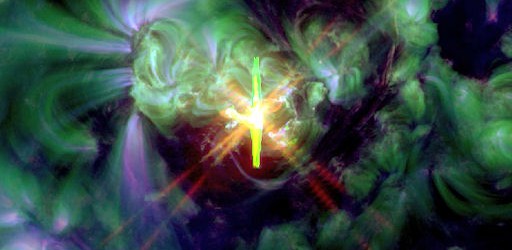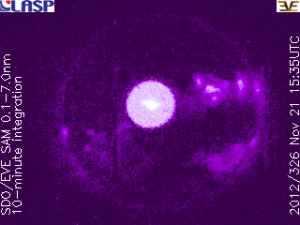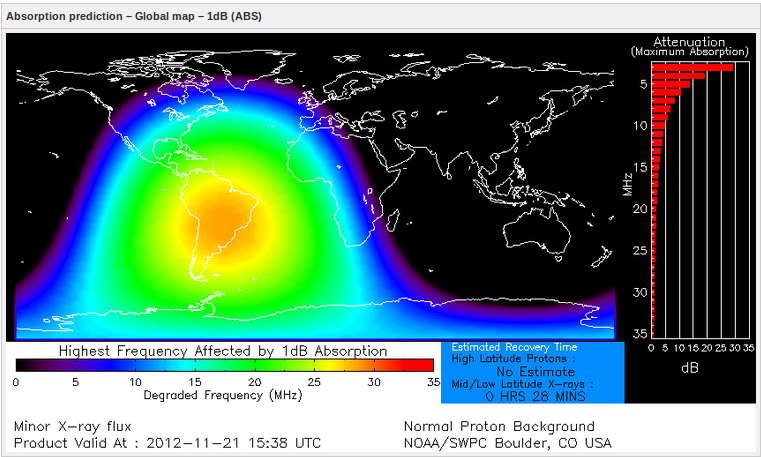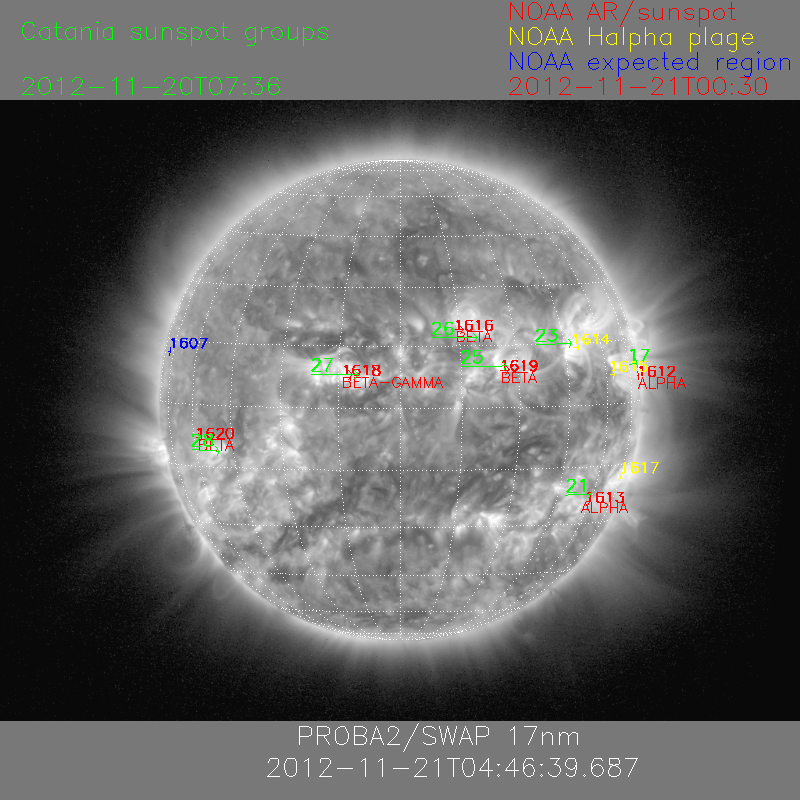Source: The Watchers - 11/21/12, By Adonai

Region 1618 is popping one M-class solar flare after another. On November 21, 2012 it erupted with M3.5 solar flare peaking at 15:30 UTC. This is second M-class solar flare of the day, the second M-class from Region 1618 today, and fourth M-class solar flare in last 24 hours.

A Type II and IV Radio Emissions were reported. Type IV Radio Emissions occur in association with major eruptions on the Sun and are typically associated with strong Coronal Mass Ejections (CME) and solar radiation storms.
A 10cm Radio Burst (TenFlare) was associated with the event. This can be indicative of significant radio noise in association with a solar flare. The more intense solar flares are associated with TenFlares. Almost all major flares are associated with them. Generally, the greater the intensity of the burst of noise observed at the 10.7 cm wavelength band, the more significant the flare is said to be.
NOAA/SWPC forecasters estimated there was 70% chance of an M-class event today, and 15% chance of an X-class event.
Region 1618 is now ten times wider than Earth. It’s continually growing and still has Beta-Gamma magnetic configuration capable of producing strong solar flares. It is now located in the center of the solar disk, in perfect position for Earth directed Coronal Mass Ejections (CME).
***
Space Weather Message Code: SUM10R
Serial Number: 569
Issue Time: 2012 Nov 21 1722 UTC
SUMMARY: 10cm Radio Burst
Begin Time: 2012 Nov 21 1521 UTC
Maximum Time: 2012 Nov 21 1523 UTC
End Time: 2012 Nov 21 1559 UTC
Duration: 38 minutes
Peak Flux: 200 sfu
Latest Penticton Noon Flux: 141 sfu
Description: A 10cm radio burst indicates that the electromagnetic burst associated with a solar flare at the 10cm wavelength was double or greater than the initial 10cm radio background. This can be indicative of significant radio noise in association with a solar flare. This noise is generally short-lived but can cause interference for sensitive receivers including radar, GPS, and satellite communications.
***
Space Weather Message Code: ALTTP4
Serial Number: 398
Issue Time: 2012 Nov 21 1606 UTC
ALERT: Type IV Radio Emission
Begin Time: 2012 Nov 21 1531 UTC
Description: Type IV emissions occur in association with major eruptions on the sun and are typically associated with strong coronal mass ejections and solar radiation storms.
***
Space Weather Message Code: ALTTP2
Serial Number: 831
Issue Time: 2012 Nov 21 1604 UTC
ALERT: Type II Radio Emission
Begin Time: 2012 Nov 21 1533 UTC
Estimated Velocity: 1918 km/s
Description: Type II emissions occur in association with eruptions on the sun and typically indicate a coronal mass ejection is associated with a flare event.
***
Featured image: Courtesy of NASA/SDO and the AIA, EVE, and HMI science teams. Image taken November 20, 2012 – Region 1618 – M1.6 solar flare at 19:27 UTC




